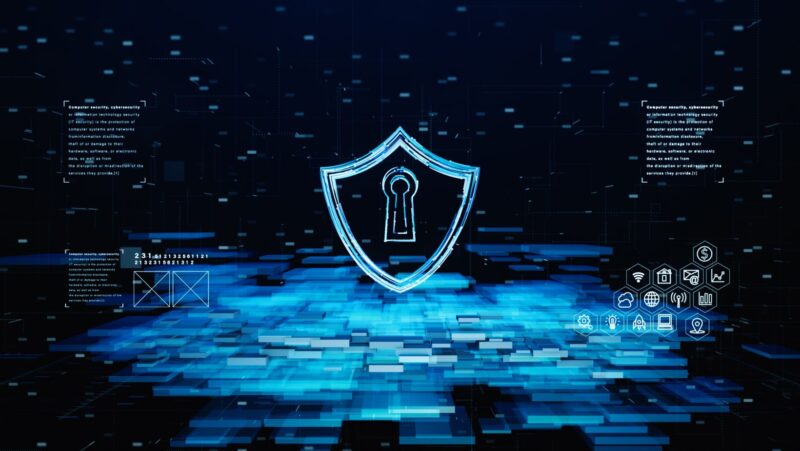
Cybercrime once focused on large enterprises with sprawling data centers. Today, attackers automate scans, buy stolen credentials in bulk, and strike whichever target looks easiest. That reality puts small and medium businesses squarely in the line of fire. A single email click or missed patch can freeze point‑of‑sale systems, ransom design files, or expose a customer database.
Yet many owners still believe their company is “too small” to interest criminals. The sections that follow dismantle that myth, outline up‑to‑date threats, and present security practices any SMB can adopt without enterprise‑level budgets.
Understanding the Cybersecurity Risks Facing SMBs
Phishing kits sell for a few dollars on underground forums, ransomware groups operate “help desks,” and automated scanners roam the internet searching for unpatched servers. Small and medium businesses often sit squarely in the crosshairs because they store valuable data yet rarely boast dedicated security teams.
Verizon’s 2024 Data Breach Investigations Report notes that companies with fewer than one thousand employees represented nearly half of recorded ransomware incidents.
Attackers assume an SMB lacks layered defenses and will pay quickly to restore operations. One boutique architectural firm in Oregon lost three weeks of billable work after its project files were encrypted-demonstrating that size alone provides no cloak of invisibility.
When a breach occurs, the fallout can be brutal. Downtime cuts revenue; lawyers demand discovery; regulators may impose fines; and shaken clients cancel contracts. Research by the National Cyber Security Alliance found that 60 percent of small businesses shut their doors within six months of a significant cyber incident. These statistics invalidate the “too small to hack” myth and reinforce the need for proactive safeguards.
Create a Strong Cybersecurity Foundation
An effective program begins with written policy. Even a brief, two‑page document that states acceptable software, remote‑access rules, and password standards helps employees make safe choices. Next, inventory sensitive data-customer records, payroll reports, engineering designs-and map where each set lives. Cloud storage should feature built‑in encryption, while on‑premises servers require restricted access and backups.
Assign clear roles. The owner or general manager need not configure firewalls, but they should approve budgets and receive incident reports. A trusted employee or outsourced IT provider can handle daily security tasks, yet accountability remains at the leadership level.
Great Practices for Protecting Your Business
Strong credentials remain the easiest defense. Require unique passphrases of at least twelve characters and enable multi‑factor authentication on email, bank portals, and administrative dashboards. Microsoft’s Security Blog revealed that MFA thwarts 99.2 percent of automated account‑takeover attempts.
Keep every device current. Most ransomware exploits known vulnerabilities that already have patches. Automating updates through Windows Server Update Services or using a Mac Mobile Device Management profile ensures desktops, laptops, and tablets receive timely fixes.
Install reputable endpoint protection such as Malwarebytes or Microsoft Defender for Business. Pair that software with a properly configured firewall to block malicious traffic. Consumer‑grade routers often ship with disabled firewalls; log in and verify filters are on.
Segment the Wi‑Fi. Guest networks should never touch accounting systems. Business‑class access points from vendors like Ubiquiti or Aruba let you create separate VLANs in minutes.
Backups matter most when ransomware strikes. Adopt the 3‑2‑1 rule: three copies of data stored on two different media, with one copy offline or in immutable cloud storage. Services like Backblaze or Wasabi provide affordable buckets with versioning to resist tampering.
Limit user privileges. A receptionist rarely needs access to payroll spreadsheets. In cloud suites such as Google Workspace, assign the least-privileged role so employees cannot accidentally delete critical files.
Encrypting data at rest with tools like BitLocker or FileVault, along with enforcing HTTPS across all internal web portals, helps protect information both in storage and in transit. These foundational steps often intersect with what cybersecurity means for modern organizations, as they illustrate common risks and encourage support for safeguards like mandatory multi-factor authentication.
For deeper guidance, the NIST Cybersecurity Framework provides a free, step‑by‑step roadmap toward risk management excellence.
Train Employees to Recognize and Avoid Threats
Technology fails if users click every attachment. Conduct quarterly awareness sessions-thirty minutes is enough-to review phishing red flags, social‑engineering phone calls, and safe web habits. Free simulated‑phishing tools from the CISA Small Business Guidance portal help staff spot spoofed messages without breaking the budget.
Celebrate catches publicly; positive reinforcement beats blame. Post a scoreboard showing how many suspicious emails the team forwarded to IT for review.
Use Affordable Cybersecurity Tools and Services
Budget limits need not hinder protection. Password‑management platforms like 1Password Teams cost less than a coffee per employee each month. SentinelOne and CrowdStrike offer entry‑level endpoint licenses tailored for smaller fleets. Cloud‑backup vendors charge by gigabyte, letting owners scale gradually.
If internal skills run thin, consider a managed security service provider. MSSPs monitor logs, patch systems, and respond to alerts 24 × 7. Companies seeking reliable help with both security and network management can benefit from the reliable network infrastructure support in Toronto. Review contracts carefully: confirm data-breach notification timelines and verify the provider carries liability insurance.
Automation helps as well. Services such as Automox push patches to Windows, macOS, and Linux devices without manual intervention.
Prepare for the Unexpected with an Incident Response Plan
A concise, step‑by‑step document saves precious minutes during chaos. Include immediate actions-disconnect affected machines from the network, preserve logs, notify the MSSP-and escalation contacts: legal counsel, cyber‑insurance carrier, local FBI field office. Store a printed copy off‑line; ransomware can encrypt digital runbooks.
Test at least annually. Stage a tabletop drill where managers walk through a simulated email compromise. These exercises reveal missing phone numbers or unclear decision points before a real crisis.
Looking Ahead: Cybersecurity in the Future
Artificial‑intelligence tools will soon write phishing emails free of grammar mistakes, making human detection harder. Conversely, defenders leverage machine learning in products like Google Chronicle to flag anomalous behavior faster than manual review. Collaboration among governments, security vendors, and nonprofits-witness the Cyber Threat Alliance’s shared‑intel platform-will grow critical for small businesses that cannot gather threat data alone.
Demand for skilled practitioners remains high. CompTIA’s 2024 report shows cybersecurity job postings grew 17 percent year over year, even amid broader tech layoffs. SMB owners may outsource advanced tasks but still need baseline knowledge to evaluate vendors.
Conclusion
Frequently Asked Questions
How much should a small company budget for cybersecurity?.
Analysts at Gartner suggest allocating between five and ten percent of total IT spending to security controls. Start with essentials-MFA, backups, endpoint protection-and expand gradually.
What insurance covers cyber incidents?
Cyber‑liability policies reimburse costs such as forensics, legal fees, and ransom payments. Insurers often require proof of MFA and regular backups before issuing coverage.
Is free antivirus good enough?
Free tools offer baseline detection, but paid business versions add centralized logs, device‑control policies, and faster signature updates-critical for fleet management.









